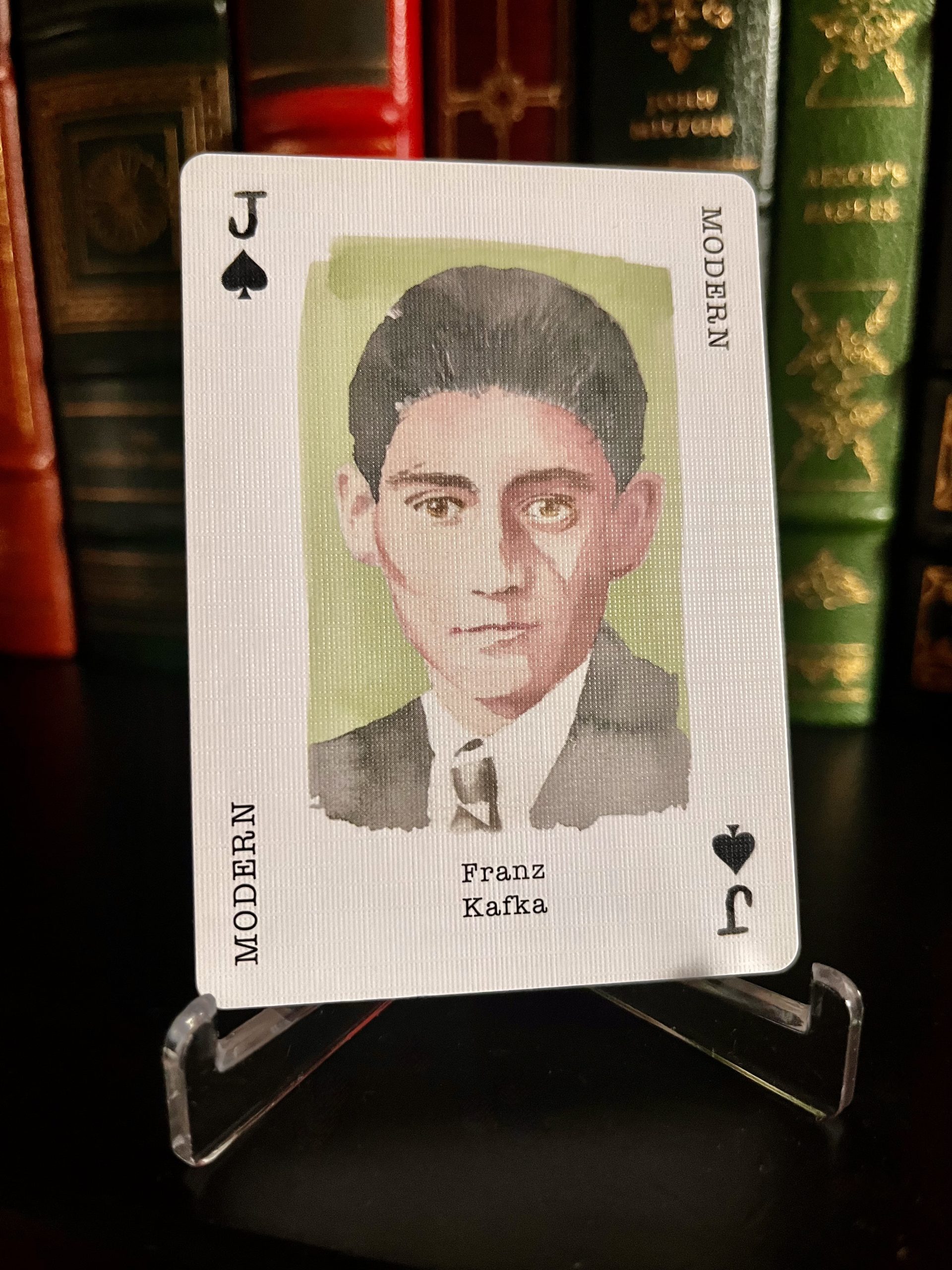Interviews
The Mad Rebellion of King Ludwig and Empress Sisi
Jac Jemc’s novel "Empty Theatre" satirizes the royal cousins' attempts to resist the roles they were born into

You’ve likely heard of him thanks to his nickname “The Mad King of Bavaria” or his castle Neuschwanstein, which inspired Disney’s Cinderella. You’ve likely heard of her thanks to Netflix’s show The Empress. Renowned for their exceptional beauty in late -19th-century Europe, these royal cousins have found new life in Jac Jemc’s latest novel, Empty Theatre, or The Lives of King Ludwig II of Bavaria and Empress Sisi of Austria (Queen of Hungary), Cousins, in Their Pursuit of Connection and Beauty Despite the Expectations Placed on Them Because of the Exceptional Good Fortune of their Status as Beloved National Figures. With Speculation into the Mysterious Nature of Their Deaths.
Like its playfully long title, Jemc’s novel gallops across the lives of Ludwig and Sisi, snorting at their royal duties with the irreverence of a wild horse. The cousins don’t take well to monarchal reins, their bodies still lanky with teenage freedom when they reluctantly assume power. Half-feral in her love of forest and field, Sisi becomes engaged to the Emperor of Austria, also her cousin. Her life’s purpose, she is told, is to produce an heir. She gives birth to four children, neglecting all but the last, and travels around Europe’s spa towns, after diagnosing herself with tuberculosis to ensure she’ll remain undisturbed. Ludwig is a misanthropic dreamer who prefers Goethe to geopolitics. He plays hooky anytime he hears the word “military” and recites poetry to avoid signing edicts. A naively devoted patron of the composer Richard Wagner, Ludwig throws money at operas, reaping the benefits when Wagner’s company performs just for him. Both rockstarishly excessive, Ludwig and Sisi’s disinterest only makes their people love them more.
I spoke with Jac Jemc over Zoom in late January 2023. We discussed the erasure of Ludwig’s queerness in royal documents, the relationship between creation and connection, and the cousins’ haunted inheritance.
Elizabeth McNeill: You’ve written six books to date, mainly horror exploring the nature of reality by creating discomfort and instability in the reader. Did this background draw you to Ludwig and Sisi, figures who created discomfort and instability in their own day? Was this fascination at first sight, or a slow burn?
Jac Jemc: Ludwig was the start of this project. The thing that drew me to him was the story of his death, which I talked about in the prologue of the book. So, there’s no spoiler alert needed to say at a certain point he’s declared insane by a doctor who’s never met him, and then found murdered within basically 36 hours. He and his doctor are both found murdered, and no one knows what happened. There’s all of these historical conjectures. I just love the theories and that kind of mysterious element of his life, to say nothing of all of these apocryphal stories and trying to parse what’s actually true, and what are just rumors. That definitely seems related to an interest in horror that runs through some of my work. But also, the fact that he was so obsessed with building these huge castles that he almost saw as stage sets more than architecture. These haunted psychological spaces ties back to my last novel, which was a haunted house story. So, that’s what drew me in and then everything expanded out from that in terms of finding other people in his life I was equally fascinated by and wanted to explore more.
EMcN: Speaking of exploration, in the acknowledgments, you call this “a fiction based on many personal fictions.” Could you elaborate? I really want to know how you gathered all of this data. It’s just so rich!
JK: So many of the characters wrote these self-mythologizing memoirs, or were keeping diaries or writing letters for very specific purposes, where the truth might be slightly obscured behind what they’re trying to attain with the information they’re sharing. And, of course, there are these royal spin doctors deciding what they want to be public about the different kings’ and queens’ lives.
The biggest thing that it’s hard to work through and find factual information about is the fact that King Ludwig was absolutely queer, and the royal documents have tried to erase that to the best of their ability. When I was looking back at the documents, at the diaries that they haven’t destroyed entirely, it’s very easy to see. I think the danger of that, too, is that one of the relationships Ludwig is most well known for is his patronage of the composer Wagner, and everyone I talked to about this project will say, oh, well, he was in love with Wagner, right? Like, he was romantically in love with him? No, I don’t think so. I think that part of his life was so obscured and covered up that we just assume that. I think he was in love with lots of people, but his love for Wagner was really focused on the music and the art Wagner was creating. And so, disentangling the theories and reinterpreting the sources and trying to come to my own understanding of these historical figures was a great challenge and a lot of fun.
EMcN: So, the two monarchs at the novel’s center, as the wonderfully long 19th-century title puts it, are “in pursuit of beauty and connection.” But despite getting everything they could possibly dream up, beauty and connection elude them. How did your own understanding of beauty and connection change over the course of writing about these lonely, yet beloved figures?
JJ: In the beginning of working on the project, I was more focused on the art aspect. The initial title that I wanted for the book was the German word “Gesamtkunstwerk.” It’s a term Wagner coined to mean “total work of art,” that coming together of all the properties, in his case in an opera production. But it could be for any type of art being created. Think of all that goes into it to create that immersive experience. And my agent said, bad idea, an inscrutable word as the title. We sold it as Total Work of Art, just the English translation. As we were working on it more, my editor said, is this the right name for the book? I am grateful to her for that, because I think that, ultimately, the book did become more about this attempt at finding ways to connect more than it was about creating a beautiful world to inhabit, and realizing that connection is a big part of that. And if you’re missing that, you’re missing out on everything. One of the reasons that happened is that, as I was researching Ludwig, I started to bring in all of these women who were present in his life or his family’s life. Sisi, his cousin, is one of his best friends and a parallel iconoclast. At one point, there were two other major threads in the book: Lola Montez, the courtesan who wooed his grandfather and made him abdicate the throne. And a sculptor, named Elisabeth Ney, who’s still in the book but in a more minor role. I started to pull in these other people who are similarly trying to achieve something outside of what was expected of them, but often falling on the human relationships in their lives as a consolation for ways those careers didn’t go as they expected, or not even falling on them as a consolation, but sometimes those relationships suffering because of the effort they were putting into trying to achieve these very large scale goals.
EMcN: It’s a shame you couldn’t keep the title “Gesamtkunstwerk!”
JJ: I know, I love a long German word! If I saw a book with that title on the hardcover table at a bookstore, I would be like, snatch, I want it! But I am attentive to the idea that maybe that is not true of everyone.
EMcN: One of the things that initially struck me was the long title. It’s getting at the same sort of thing as “Gesamtkunstwerk,” without being a German word. It really captures that time.
JJ: I did like that we eventually added the long subtitle and I found a way to make it a little cheeky.
EMcN: Going back to the theme of connection, so much of Sisi and Ludwig’s unhappiness comes from punishing themselves to fit these narrow expectations of gender, sexuality, appearance, and even royal duty. Considering your love of feminist horror, I’d be interested to hear what you think is haunting Sisi and Ludwig, and what the necessary exorcism is, if an exorcism is required at all.
JJ: I think it is the expectations placed on them and their inability to escape them. I think that both of them would have been happier if they weren’t royalty. They were put in positions where they were being asked to do things they were not made to do, or they were not talented at. And so, it meant that they tried to rebel in whatever ways they could, but they still felt like they had failed to a certain extent, because everyone expected one thing, and they did something else. They’re both descendants of this Bavarian line, the Wittelsbachs, and they were very aware of the inbreeding and the line of madness in that ancestry. I am also really curious about the way in which they distrusted themselves. They had an aunt who believed she’d swallowed a glass piano, and they knew there was this possibility something had gone amiss in their genetics. I feel like that was haunting both of them: this fear that their opinions or desires would be discounted because of a certain familial history.
EMcN: I’d love to talk about how art functions as an escape from Ludwig’s kingly duties. He creates this dream world through his patronage of Wagner and his obsession with castle-building. Fittingly, the Ludwig of your novel is such a romantic, operatic character. Do you think Ludwig was an artist in his own right? He seemed to have a unified vision.
They tried to rebel in whatever ways they could, but they still felt like they had failed to a certain extent, because everyone expected one thing, and they did something else.
JJ: People don’t realize that so many aspects of modern-day theater were started by Wagner. The fact that the house lights are dimmed, that the orchestra is put under the stage. Wagner did these things to make everything feel like you’re in the show you’re watching on the stage. There’s a reason Wagner was the one Ludwig attached himself to in terms of the opera or stageplay he wanted to exist in. So, Ludwig is an artist to a certain extent, but he’s more of a producer. He has the money and an idea of what he wants to support and see more of in the world, and he finds the people who are able to to materialize his visions.
EMcN: You’re trapped in the smallest room in Ludwig’s smallest castle for a month. You can’t leave or admit anyone else into the room, except for either Ludwig or Sisi, who is also trapped in the room with you. Whom do you choose and why?
JJ: This is such a hard question. I would have to choose Sisi because I feel like Sisi would at least potentially talk to me or communicate with me in some way. I am not convinced that Ludwig would not just shut down and rock in the corner and ignore the fact that I was there with him. He would be so much more tormented in that situation, and I think Sisi could deal with it a little better. I say that with great difficulty because, when push comes to shove, I am more fascinated by Ludwig. But he’s more of a wild card. And I don’t know if that’s what you want for a month.









